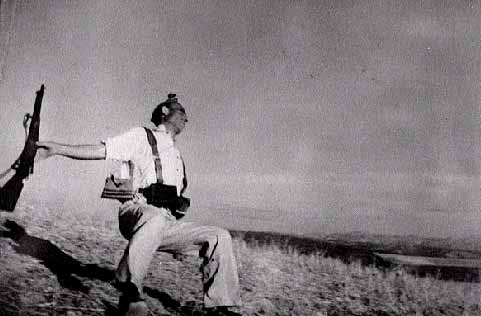 As I mentioned in 5×8 this morning, the New York Post printed a photograph of a man who had just been pushed in front of a New York City subway train. Moments after the freelance photographer took the picture, the man was dead.
As I mentioned in 5×8 this morning, the New York Post printed a photograph of a man who had just been pushed in front of a New York City subway train. Moments after the freelance photographer took the picture, the man was dead.
What is to be gained by publishing the picture? It’s a question that haunts journalists who make these decisions.
It’s fairly easy for me to say “nothing,” and then I recalled one of the most compelling photographs I’ve ever seen.
I was living in Boston in June 1975, not far from the spot where the great photographer Stanley Foreman took this picture of Diana Bryant, and the girl, Tiare Jones, when the fire escape collapsed. They’d sought shelter on it when fire engulfed their apartment. A radio traffic reporter landed his helicopter on the building trying to save them when it gave way. A fire ladder was just inches from reaching them.
Such are the frailties of life.
For this picture, Foreman was awarded a Pulitzer. And Boston strengthened its fire code.
“We’re squeamish because news pictures of the dead and dying are of real people and real events. If a news image works, it penetrates, lingers, forces our attention to the events involving death that it depicts,” Barbie Zelizer, the author of About To Die: How News Images Move the Public, said in an interview with Slate last year. “If a news image works, it doesn’t disappear when we cast aside the newspaper, dim the TV or turn off the Internet. That may be more intrusion than most people are willing to allow.”
Images of the moment of death stay with us in a way a few paragraphs in a newspaper cannot. This image of a Loyalist’s moment of death in the Spanish Civil War haunts us still.

As does the moment when Lee Harvey Oswald was killed in 1963.

“Where images of dead bodies often push viewers away, creating a sense of distance and objectification, images of impending death do the opposite: They often draw viewers in, fostering engagement, creating empathy and subjective involvement, inviting debate,” Zelizer said.
